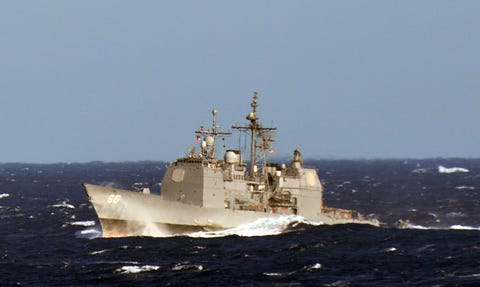A New Electronic Device Could Cure the Military's Big Motion Sickness Problem
Motion sickness affects all branches of the armed forces, from vehicle crews to submariners.
By Kyle Mizokami
MC1 NATHANAEL MILLER
A new invention fools the human nervous system into filtering out the causes of motion sickness, preventing users from needing to reach for the barf bag. The Ototech device causes the brain to ignore the signals that lead to motion sickness, a huge problem for the U.S. military.
The Armed Forces have a huge motion sickness problem. Infantrymen sitting in the back of M2 Bradley fighting vehicles, riding perpendicular to the direction of travel and across rough, often bumpy terrain, get carsick (fighting vehicle sick?). Pilots and aircrews get airsick, and even military personnel training in enclosed, immersive simulators get motion sickness. By far the worst problem is with sailors at sea with the U.S. Navy, where even a quarter of personnel get seasick in moderate seas.
Scientists have long thought that some kind of cure for motion sickness was possible. After all, sailors eventually “gets their sea legs"—the point at which the human body eventually screens out the rocking of a ship at sea and motion sickness no longer becomes a problem. Without understanding fully how motion sickness is triggered science has only been able to treat the symptoms of the problem. Drugs like scopolamine, while useful, also have serious side effects, particularly drowsiness.
The Ototech could erase motion sickness as a problem. As DefenseOne explains, the device is worn on a headband that holds it snug behind the ear. There is emits subtle vibrations to fool the brain into disregarding the motion signals making a person sick. The human brain stops processing certain sensations, the inventor, Samuel Owen, that are “noninformative”--like the shirt on your back. The vibrations target the vestibulocochlear nerve, somehow persuading the brain to take the signals that lead to motion sickness and dump them in the “noninformative” category.
At least that’s the theory. The inventor himself isn’t even certain how it works--but it does. The result is a device that could have huge implications for hundreds of thousands of military members, from sailors on a destroyer in rough seas to aerial refueling tanker crews flying through turbulence. The result is military personnel more alert, focused, and better able to do their jobs.
Read more at DefenseOne.
No comments:
Post a Comment